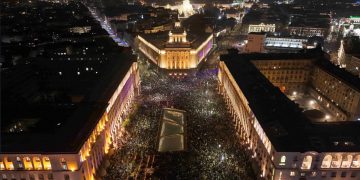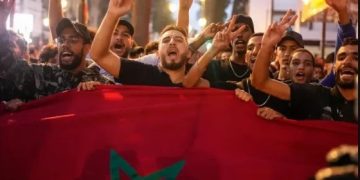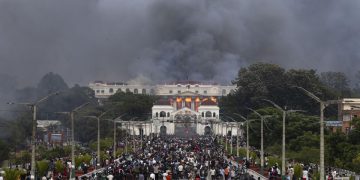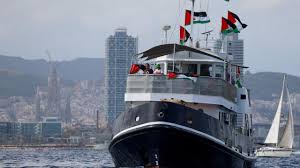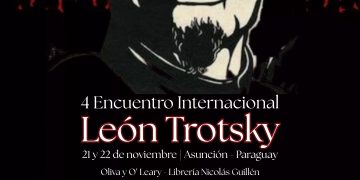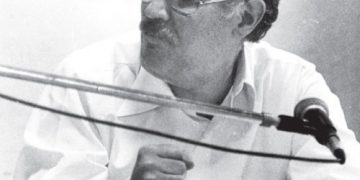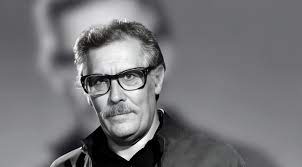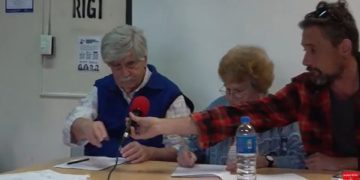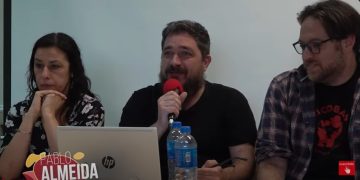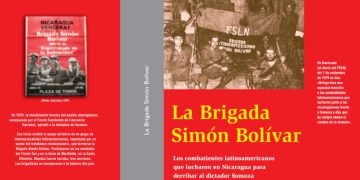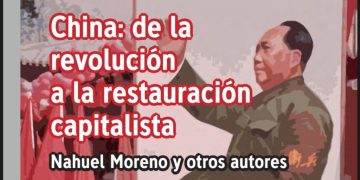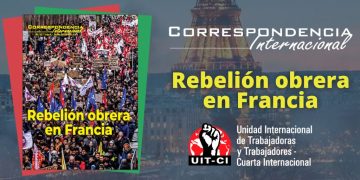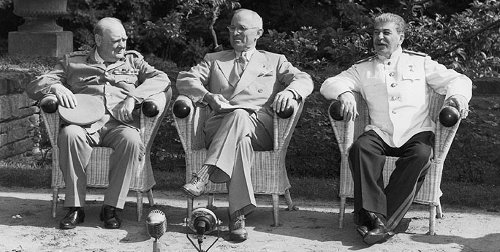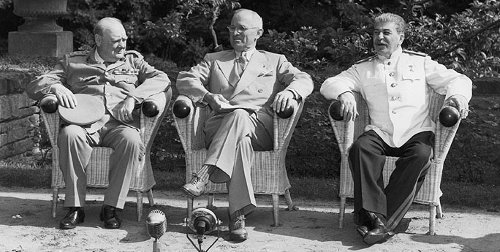 El hombre que traicionó al leninismo y la revolución (English version)
El hombre que traicionó al leninismo y la revolución (English version)
El 5 de marzo de 1953, víctima de una hemorragia cerebral, falleció uno de los hombres más poderosos del siglo XX. La URSS y su «esfera de influencia» ya no existen. El debate sobre el papel de José Stalin mantiene total vigencia para los revolucionarios del siglo XXI.
En 1953, la URSS (Unión de Repúblicas Socialistas Soviéticas), el país más extenso del mundo, era la segunda potencia industrial y se preparaba para disputarle la conquista del cosmos a los Estados Unidos. Hasta entonces, para la «historia oficial» del Partido Comunista de la Unión Soviética (PCUS) y sus agencias, que dominaban Europa Oriental, estos logros se debían a la obra de un hombre: el «padrecito» Stalin. Apenas tres años después, el nuevo secretario general del PCUS, Nikita Kruschev, hacía un «informe secreto» contra Stalin y se iniciaba una «desestalinización». En ambos casos, la burocracia mentía al pueblo soviético y trabajadores del mundo, para conservar sus privilegios y la convivencia con el imperialismo.
El ascenso de Stalin al poder
A mediados de la década del 20 se produjeron en la joven URSS cambios muy profundos. En 1917 se había logrado el triunfo del primer gobierno obrero y campesino de la historia, apoyado en la movilización de los trabajadores y el pueblo de Rusia y las nacionalidades oprimidos por el zarismo. Se asentaba en los soviets, la democracia obrera y la conducción revolucionaria e internacionalista del Partido Bolchevique. El inmenso sacrificio que permitió al pueblo soviético ganar una cruenta guerra civil dejó al país devastado. En Europa, en particular en Alemania, la traición de la socialdemocracia impidió nuevos triunfos de la revolución socialista.
En ese marco, mientras se agravaba su quebrantada salud, Lenin comenzó una dura batalla contra la burocratización del Estado y el partido. Su apoyo fundamental en el Buró Político era León Trotsky. El jefe de la naciente burocracia era José Stalin.
Favorecido por la muerte de Lenin, Stalin logró el control del aparato burocrático. En 1924 se inició un curso de contrarrevolución política, que se sintetizó en la fórmula nefasta «el socialismo en un solo país». Apoyándose en el cansancio de las masas soviéticas, el aparato burocrático logró derrotar a Trotsky y la oposición de izquierda.
La regresión política se asentó en la instauración de una férrea dictadura. En los años 30 reinaba en la URSS un régimen represivo que impuso un genocidio, con millones de perseguidos, deportados a campos de concentración y muertos. Los «procesos de Moscú» dieron lugar al fusilamiento de lo que quedaba de la vieja dirección bolchevique. Trotsky fue asesinado en el exilio en 1940 por un agente de Stalin. Igualmente nefasta era la política de conciliación con las burguesías, llamada «frente popular», y la sustitución del partido leninista por su caricatura, el «centralismo burocrático» estalinista.
La URSS en la posguerra
Gracias al colosal esfuerzo del Ejército Rojo y el pueblo soviético, que les costó 20 millones de muertos, la URSS cumplió un papel protagónico en la segunda guerra mundial para aplastar al nazismo (véase A 70 años del triunfo de Stalingrado). Stalin pudo fortalecer su figura adjudicándose los méritos de ese logro. Y encabezó personalmente los pactos que firmó con Inglaterra y Estados Unidos para establecer un reparto del mundo en los marcos del dominio imperialista. Se fijaron las «esferas de influencia» de la posguerra. La burocracia soviética extendió su poderío instaurando regímenes semejantes al de la URSS en el Este de Europa, las «democracias populares». A partir de 1949 se fortaleció aún más por el triunfo de la revolución socialista en China, bajo la conducción del Partido Comunista y Mao Tse Tung.
A comienzos de los años 50, en un tercio de la humanidad se había expropiado a la burguesía, con regímenes totalitarios. Stalin era el supremo dictador del así llamado «socialismo real». Pero las masas soviéticas habían comenzado a reponerse del esfuerzo bélico y se iniciaba un nuevo ascenso, que provocó reacomodamientos y temores en las cúpulas de la burocracia.
La muerte de Stalin le vino bien a la burocracia
Aun hoy se sigue comentando si Stalin tuvo realmente un accidente cerebro vascular o fue envenenado. Todo sería posible en las bambalinas del poder estalinista y, en última instancia, tiene poca o ninguna importancia. El hecho es que 1953 fue un año convulsionado por nuevos hechos de rebelión de las masas. Dentro de la URSS se produjeron las grandes huelgas de los campos de concentración de Vorkuta y Kazajstán. Y en Berlín Oriental, por primera vez hubo una importante huelga obrera que fue aplastada por el ocupante Ejército Rojo.
Los dos lugartenientes principales de Stalin eran Gregory Malenkov y Laurent Beria, que pretendían mantenerse en lo alto de la cúpula. No pudieron. Beria, jefe de los siniestros servicios secretos, fue fusilado en diciembre. El nuevo secretario general, Nikita Kruschev, iba consolidando sus manejos y su poder. En 1955 fue destituido Malenkov.
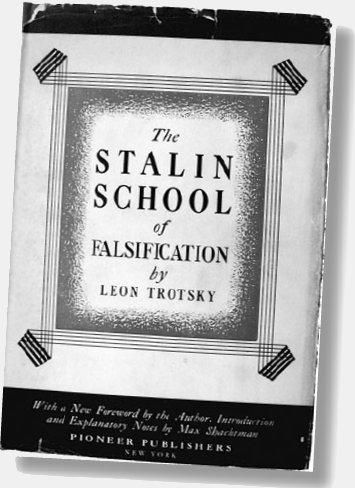
Para dar una válvula de escape a los reclamos crecientes contra la dictadura, la burocracia encontró su chivo expiatorio: el fallecido Stalin. En febrero de 1956, con un informe sorprendente y repentino de Kruschev, se le atribuyeron «errores» y un injustificable «culto a la personalidad» (véase El Socialista Nº 23). No hubo ningún tipo de replanteo o crítica a las políticas de acuerdo con el imperialismo y las burguesías, que llevaban a la derrota o al estancamiento a las revoluciones. El único tema «político» fue reivindicar como gran mérito de Stalin su persecución al «trotskismo».
Este «cambiar para que nada cambie» tuvo su confirmación en octubre de 1956, cuando el Ejército Rojo aplastó a sangre y fuego a los trabajadores húngaros que reclamaban socialismo sin ejército ocupante y represión. De todos modos, para mantener la «desestalinización», en 1961 el féretro de Stalin fue removido del lugar de máximo honor que ocupaba en el mausoleo central junto a Lenin y reubicado en las murallas del Kremlin.
60 años después
Hoy día prácticamente nadie niega el carácter despótico del régimen de Stalin y han seguido saliendo a la luz sus rasgos genocidas, que Trotsky denunció en los años 30. Se alimenta así la versión de los imperialistas y la socialdemocracia de que la URSS simplemente fue una siniestra dictadura totalitaria «heredera del leninismo». En un sentido opuesto, algunas voces de «izquierda» lo siguen justificando a Stalin y a sus crímenes, con la argumentación descabellada de que era el único camino para que avanzara el «socialismo» posible. Al mismo tiempo, como la expropiación de la burguesía ha sido revertida y se restableció la explotación capitalista imperialista en todo el planeta, muchas voces sacan la conclusión de que fracasó ese falso «socialismo» porque hubo un equivocado «estatismo».
Para desarrollar estos debates, es imprescindible recordar la lucha de Lenin, Trotsky y la oposición de izquierda para impedir el triunfo y consolidación del aparato burocrático que encabezó Stalin. Trotsky sostenía que sería inexorable el fracaso de la burocracia si se mantenía en el poder, ya que iría transformando su capitulación al imperialismo en la directa restauración del capitalismo. Solo con una nueva revolución, que aplastara a la burocracia y retomara el camino inicial de lucha consecuente contra la burguesía y el imperialismo, de independencia de clase y democracia obrera, se podría haber salvado a la URSS. Sigue pendiente la lucha por el triunfo de la revolución socialista y la reconstrucción de la dirección obrera e internacionalista que la encabece.
La «sífilis» del movimiento obrero mundial
En pocas palabras, así solía referirse Nahuel Moreno a los partidos comunistas estalinistas. Desde 1953 señalaba que la muerte de Stalin no modificó el más grave problema de la humanidad, derrotar a la burocracia y superar la crisis de dirección instalada en los años 20. Esa es la razón de ser de la lucha de Trotsky y el trotskismo revolucionario.
Moreno hacía una sistemática contraposición entre leninismo y estalinismo. Decía en 1957, comentando la «unanimidad» burocrática: «Este siniestro régimen totalitario [estalinista] no tiene nada que ver con el verdadero leninismo, con el comunismo. Con Lenin ocurría exactamente lo opuesto: no hubo un solo problema importante -desde si se hacía la revolución hasta la guerra contra Polonia- que se haya resuelto por unanimidad. Jamás había unanimidad. Lenin fue repetidas veces derrotado, pese a que la guerra civil y la defensa ante el ataque imperialista de veintiún naciones impusieron enormes restricciones a las libertades democráticas obreras. La tendencia de los leninistas era, precisamente, llegar a una democracia como jamás conoció la humanidad.»*
El régimen inaugurado por Stalin, y que lo sobrevivió, hasta que finalmente las masas soviéticas acabaron con él, fue uno de los más horrorosos que jamás conoció la humanidad.
* «El marco histórico de la revolución húngara». Véase Escritos de revolución política, en www.nahuelmoreno.org
 60 years ago Stalin died
60 years ago Stalin died
The man who betrayed Leninism and the revolution
By Mercedes Petit, Izquierda Socialista
On March 5, 1953, victim of a brain haemorrhage, died one of the most powerful men of the twentieth century. The USSR and its «sphere of influence» no longer exist. The debate on the role of Joseph Stalin remains fully valid for XXI century revolutionaries.
In 1953, the USSR (Union of Soviet Socialist Republics), the largest country in the world, was the second industrial power and prepared to dispute the conquest of the cosmos to the United States. Until then, according to the «official history» of the Communist Party of the Soviet Union (CPSU) and its agencies, which dominated Eastern Europe, these achievements were due to the work of one man: the «little father» Stalin. Just three years later, the new general secretary of the CPSU, Nikita Khrushchev, issued a «secret report» against Stalin and launched a «de-Stalinization». In both cases, the bureaucracy was lying to the Soviet people and workers of the world to preserve their privileges and coexistence with imperialism.
Stalin’s rise to power
In the mid-1920s very profound changes occurred in the young USSR. In 1917 they achieved the victory of the first workers and peasants’ government in history, supported by the mobilization of the workers and the people of Russia and the nationalities oppressed by tsarism. It was supported by the soviets, workers democracy and revolutionary and internationalist leadership of the Bolshevik Party. The immense sacrifice that allowed the Soviet people to win a bloody civil war had left the country devastated. In Europe, particularly in Germany, the betrayal of social democracy prevented new triumphs of the socialist revolution.
In this context, while his failing health was worsening, Lenin began a tough battle against the bureaucratization of the state and the party. His key support in the Politburo was Leon Trotsky. The head of the nascent bureaucracy was Joseph Stalin.
Favored by the death of Lenin, Stalin gained control of the bureaucracy. In 1924 he began a course of political counterrevolution, which was synthesized in the pernicious formula «socialism in one country». Relying on the fatigue of the soviet masses, the bureaucracy managed to defeat Trotsky and the Left Opposition.
The political regression was settled in the establishment of a harsh dictatorship. In the 1930s in the USSR ruled a repressive regime that imposed a genocide, with millions of persecuted, deported to concentration camps and killed. The «Moscow trials» led to the shooting of what remained of the old Bolshevik leadership. Trotsky was assassinated in exile in 1940 by an agent of Stalin. Equally ominous was the policy of conciliation with the bourgeoisie, called «popular front» and the substitution of the Leninist party by its caricature, the Stalinist «bureaucratic centralism».
The USSR in the postwar
Thanks to the colossal efforts of the Red Army and the Soviet people, which cost them 20 million dead, the USSR played a leading role in the Second World War to crush the Nazis. Stalin was able to strengthen his figure awarding himself the merits of that achievement. And he personally spearheaded the agreements he signed with Britain and the United States to establish a division of the world within the framework of imperialist domination. Postwar «spheres of influence» were established. The Soviet bureaucracy extended its power by establishing regimes similar to that of the USSR in Eastern Europe, the «people’s democracies.» From 1949 he was further strengthened by the victory of the socialist revolution in China, under the leadership of the Communist Party and Mao Tse Tung.
In the early 1950s, in a third of humanity the bourgeoisie had been expropriated, with totalitarian regimes. Stalin was the supreme dictator of the so-called «real socialism». But the Soviet masses had begun to recover from the war effort and there was beginning a new rise in struggles, prompting rearrangements and fears in the top echelon of the bureaucracy.
Stalin’s death suited the bureaucracy
Even today commentators argue whether Stalin really had a stroke or was poisoned. Everything would be possible in the corridors of Stalinist power and, ultimately, has little or no importance. The fact is that 1953 was a year rocked by new acts of mass rebellion. Within the USSR there were the great strikes of the concentration camps of Vorkuta and Kazakhstan. And in East Berlin, for the first time, there was a major labor strike which was crushed by the occupying Red Army.
Stalin’s two main lieutenants were Gregory Malenkov and Laurent Beria, who sought to remain at the top of the dome. They could not. Beria, head of the sinister secret services, was shot in December. The new general secretary, Nikita Khrushchev, was consolidating his maneuverings and power. Malenkov was ousted in 1955.
 To provide an exhaust valve for the growing claims against the dictatorship, the bureaucracy found their scapegoat: the late Stalin. In February 1956, with a surprising and sudden report of Khrushchev, he was attributed with «mistakes» and an unjustifiable «cult of personality». There wasn’t any kind of rethinking or criticism to the policies of agreement with imperialism and the bourgeoisies, leading to the defeat or stalemate to revolutions. The only «political» issue was to give Stalin great merit for his persecution of «Trotskyism».
To provide an exhaust valve for the growing claims against the dictatorship, the bureaucracy found their scapegoat: the late Stalin. In February 1956, with a surprising and sudden report of Khrushchev, he was attributed with «mistakes» and an unjustifiable «cult of personality». There wasn’t any kind of rethinking or criticism to the policies of agreement with imperialism and the bourgeoisies, leading to the defeat or stalemate to revolutions. The only «political» issue was to give Stalin great merit for his persecution of «Trotskyism».
This «change so that nothing changes» was confirmed in October 1956, when the Red Army crushed in blood and fire Hungarian workers who claimed socialism without an occupying army or repression. Anyway, to keep the «de-Stalinization», in 1961 Stalin’s coffin was removed from the place of maximum honor that was occupying in the central mausoleum next to Lenin and relocated to the Kremlin walls.
60 Years later
Today virtually no one denies the despotic nature of Stalin’s regime and the genocidal traits that Trotsky denounced in the 1930s have continued coming to light. Thus it is fed the version of the imperialists and social democracy that the USSR was just a sinister totalitarian dictatorship «heir of Leninism.» From an opposite direction, some voices of the «left» continue to justify Stalin and his crimes, with the preposterous argument that it was the only way to advance «socialism». At the same time, as the expropriation of the bourgeoisie has been reversed and reinstated the imperialist capitalist exploitation around the world, many voices draw the conclusion that this false «socialism» failed because there was a mistaken «statism.»
To develop these debates, it is indispensable to remember the struggle of Lenin, Trotsky and the Left Opposition to prevent the victory and consolidation of the bureaucratic apparatus led by Stalin. Trotsky argued that failure of the bureaucracy would be inevitable if they remained in power, since they would transform their capitulation to imperialism in the direct restoration of capitalism. Only with a new revolution, crushing the bureaucracy and retaking the initial path of consistent struggle against the bourgeoisie and imperialism, of class independence and workers democracy, the USSR could have been saved. Still pending is the struggle for the victory of the socialist revolution and the reconstruction of working and internationalist leadership to spearhead it.
The «syphilis» of the global labor movement
Thus, in a nutshell, Nahuel Moreno used to refer to the Stalinist communist parties. Since 1953 he stated that the death of Stalin did not alter the most serious problem of mankind, to defeat the bureaucracy and overcome the crisis of leadership installed in the 1920s. This it is the raison d’être of the struggle of Trotsky and revolutionary Trotskyism.
Moreno made systematic opposition between Leninism and Stalinism. He said in 1957, commenting on bureaucratic «unanimity» «This sinister [Stalinist] totalitarian regime has nothing to do with the true Leninism, with communism. With Lenin exactly the opposite happened: there was not a single major problem – from whether to do the revolution or go to war against Poland – which was resolved unanimously. There was never unanimity. Lenin was repeatedly defeated, in spite of the civil war and the defense against imperialist attack of twenty one nations had imposed enormous restrictions on democratic freedoms of the workers. The goal of the Leninists was precisely to reach a democracy as mankind had never known.»
The regime inaugurated by Stalin, and that survived him, until finally the Soviet masses finished with it, was one of the most horrifying ever known to humanity.








